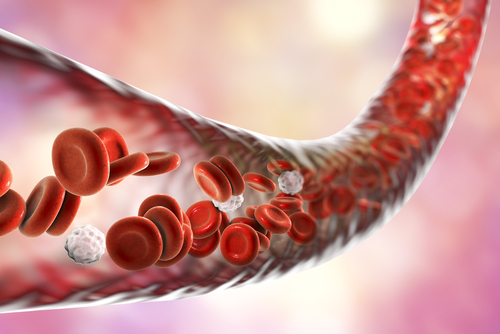Specific Bone Marrow Cells Drive PAH Development, Blocking Serotonin Receptors a Potential Treatment, Study Suggests

A subset of bone marrow cells known as proangiogenic cells (PACs) may drive the development of pulmonary arterial hypertension (PAH), according to a study that also showed that blocking a specific serotonin receptor may be a therapeutic strategy for the disease.
The study, “Bone Marrow-Derived Proangiogenic Cells Mediate Pulmonary Arteriole Stiffening via Serotonin 2B Receptor Dependent Mechanism,” was published in the journal Circulation Research.
Small blood vessel stiffening and remodeling increase the resistance to blood flow in PAH. These events occur early in the disease process, and drive further vascular cell dysfunction.
Bone marrow-derived PACs, which release molecules that promote blood vessel formation (angiogenesis), are believed to play an important role in PAH development.
A team from Vanderbilt University assessed if PACs directly contribute to PAH by promoting small vessel stiffening through the serotonin 2B receptors (5-HT2B). Previous work in mice suggested that 5-HT2B receptor activation is key for PAH development induced by bone marrow progenitor cells.
The team induced PAH in mice, and used hypoxia (oxygen deficiency) and a compound known as SU5416 — a tyrosine kinase inhibitor of the VEGF receptors 1 and 2 — to increase damage within blood vessels.
They then removed bone marrow-derived PACs and performed bone marrow transplants. To track PACs, the cells of donor animals were bound to fluorescent tags. A 5-HT2B blocker was then administered, and right ventricular systolic pressure was assessed.
Results showed that PAC removal both prevented and reversed PAH in mice, reducing the number of muscularized (with muscle development) pulmonary arterioles, or small arteries, and normalizing their stiffness. The 5-HT2B blocker also prevented PAH with similar benefits in arterioles.
In cultured cells, the investigators observed that PACs accelerated damage in cells lining small blood vessels in the lungs, and were associated with stiffer pulmonary arterioles in PAH patients and in a mouse model of the disease.
Want to learn more about the latest research in Pulmonary Hypertension? Ask your questions in our research forum.
RNA sequencing of bone marrow-derived PACs then demonstrated that blocking 5-HT2B receptors significantly changed pathways implicated in cell proliferation, movement and migration, as well as in production of and response to specific proteins called cytokines, which are key players in immunity and inflammation.
“We were quite surprised to find out that the driver of pulmonary hypertension appears to be a very small population of cells from the bone marrow,” W. David Merryman, PhD, the study’s senior author and a professor of biomedical engineering, pharmacology, medicine and pediatrics at Vanderbilt, said in a press release.
“It definitely changes the way we think about possible therapies for the disease,” Merryman added.
“Bone marrow-derived PACs directly contribute to experimental PH,” the team concluded, suggesting that targeting 5-HT2B receptors could potentially prevent or reverse PAH.







